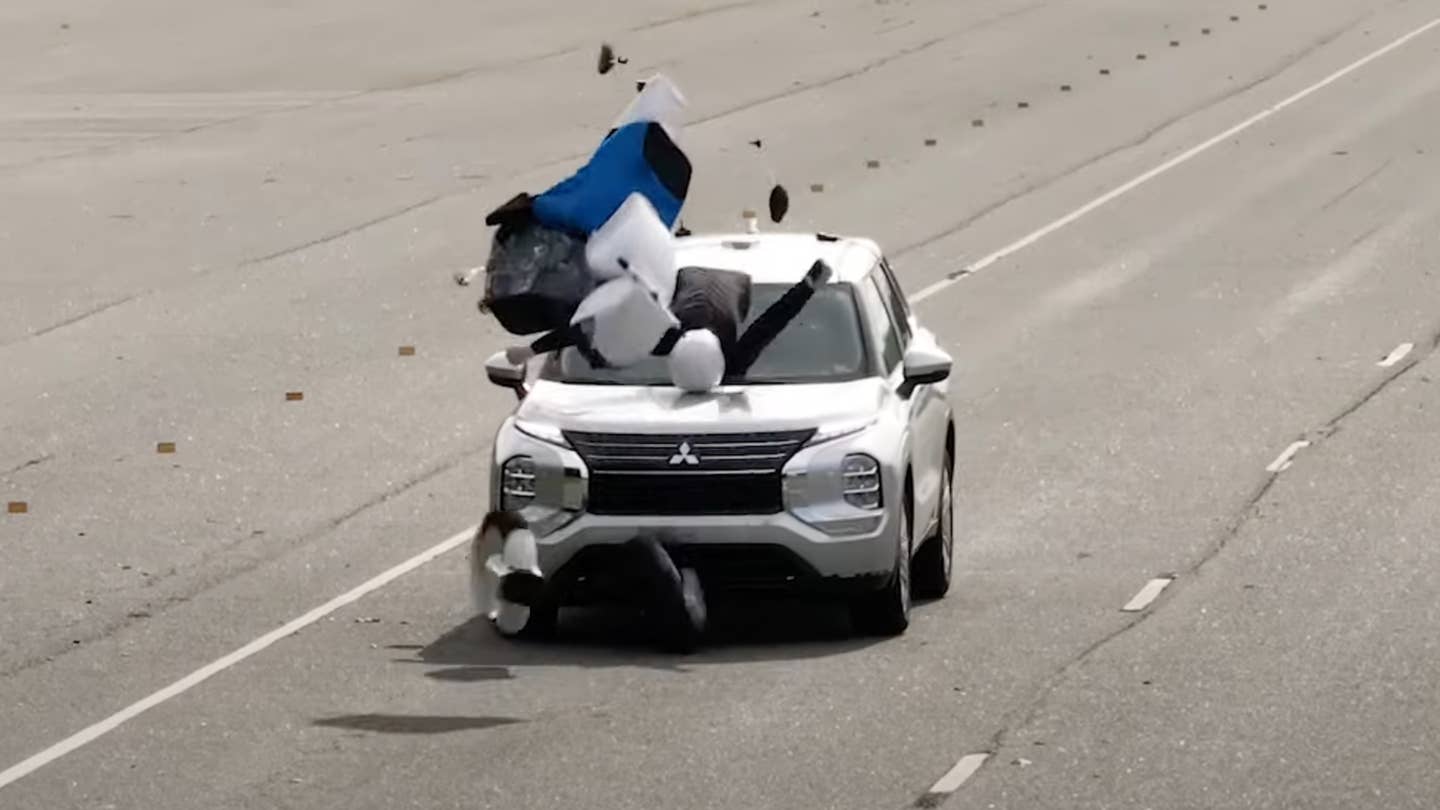Most Small SUVs Are Bad at Automatic Emergency Braking, IIHS Says
Only one of the 10 SUVs tested by the IIIHS received a good rating.

The last time the Insurance Institute for Highway Safety (IIHS) created a vehicle-to-vehicle front crash prevention test, automatic emergency braking technology was still pretty new. While IIHS' real-world data proved that such technologies were preventing crashes at higher speeds, the test still didn't rate cars' specific technologies. Now, the IIHS has a new test for automatic emergency braking, and it turns out that most small SUVs suck at it.
The SUVs that participated in the test were the Subaru Forester, Honda CR-V, Toyota RAV4, Ford Escape, Mazda CX-5, Hyundai Tucson, Jeep Compass, Mitsubishi Outlander, Chevy Equinox, and the Volkswagen Taos. Of those ten SUVs only one (!) received the IIHS' "Good" rating—the Subaru Forester. After that, only two were rated as "Acceptable," the Honda CR-V and Toyota RAV4. The Ford, Hyundai, and Jeep were rated "Marginal," while the rest were sent home with "Poor" ratings and their heads hanging low.
Automatic emergency braking technologies are designed to do two things: warn the driver of an imminent crash and, if the driver fails to heed such warnings, automatically apply the brakes on its own in time to prevent the crash. The old test was done at 12 and 25 mph. Now that automakers' tech has improved dramatically since the first test was designed, the IIHS bumped the speeds up to 31, 37, and 43 mph.
"The vast majority of new vehicles now come with automatic emergency braking, and our research shows the technology prevents as many as half of all front-to-rear crashes. This new, tougher evaluation targets some of the most dangerous front-to-rear crashes that are still happening," said IIHS President David Harkey.
Test cars are driven at those predetermined speeds toward three different stationary objects: an inflatable dummy motorcycle, an inflatable dummy car, and a real semi-truck trailer. Since the semi-truck trailer is real, drivers don't let the car strike it, obviously, but instead drive around it after it warns them of an impending crash. As for the inflatables, the cars can and very much do crash into them.
Most of the SUVs had sufficient warnings that alerted drivers well ahead of time. Unfortunately, most of them were also incapable of stopping completely before crashing into the dummies at higher speeds. Admittedly, even a drastic reduction in speed before a collision will make crashes far less severe. But of course, the point of these systems is to avoid crashes completely and, in that regard, some of the most popular vehicles on our roads still have a ways to go.

Got tips? Send 'em to tips@thedrive.com
